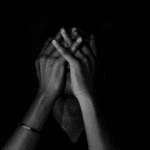Anxiety symptoms affect nearly one in three adults at some point in their lives, making this condition far more common than many of us realize. In fact, anxiety disorders impact more than 40 million adults in the United States alone as revealed in the latest global mental health statistics—approximately 18% of the population—every year. Unfortunately, less than 45% of people with anxiety disorders actually receive treatment, often because they don’t recognize the early warning signs.
We all experience occasional worry or stress, but understanding what anxiety feels like and identifying the signs of anxiety early can make a significant difference in managing this condition. Physical symptoms of anxiety often manifest before we consciously recognize what’s happening—from racing heartbeats to muscle tension and digestive issues. What does anxiety feel like? The experience varies widely from person to person, but certain anxiety warning signs shouldn’t be ignored. Throughout this article, we’ll explore both the emotional anxiety symptoms and physical anxiety symptoms that might indicate an anxiety disorder, helping you recognize when it’s time to seek support.
Table of Contents

What does anxiety feel like?
“Anxiety is a thin stream of fear trickling through the mind. If encouraged, it cuts a channel into which all other thoughts are drained.” — Arthur Somers Roche, American journalist and novelist
Everyone’s experience with anxiety differs, yet certain patterns emerge in how this condition manifests. Anxiety exists on a spectrum ranging from helpful alertness to debilitating distress.
Mild vs. severe anxiety: how to tell the difference
Mild anxiety is part of everyday life and can actually enhance focus, helping you perceive your surroundings with sharper awareness. You might notice restlessness, slight irritability, or tension-relieving behaviors like finger tapping or fidgeting. At this level, anxiety typically doesn’t interfere with daily activities.
Moderate anxiety narrows your perceptual field, reducing your ability to fully observe your surroundings. You may experience selective inattention—seeing or hearing only certain things unless they’re pointed out. Physical signs include perspiration, elevated heart rate, headaches, and gastric discomfort.
Severe anxiety significantly reduces your perceptual field, leaving you focused on scattered details or appearing dazed. Learning and problem-solving become nearly impossible at this stage. Physical symptoms intensify to include hyperventilation, pounding heart, and a sense of impending doom.
Panic-level anxiety represents the most extreme form, resulting in significantly dysregulated behavior. People experiencing panic may lose touch with reality, demonstrating behaviors like pacing, running, or withdrawal. Acute panic can lead to exhaustion and may be indicative of panic disorder.
Common emotional anxiety symptoms
Anxiety profoundly affects your mental state. Common emotional symptoms include feeling anxious, tense, or unable to relax; having a sense of dread or fearing the worst; feeling like the world is speeding up or slowing down; and worrying that others can see your anxiousness.
Furthermore, many people experience difficulty controlling constant worries, feeling like you can’t stop worrying, or believing bad things will happen if you stop. Rumination—thinking repeatedly about negative experiences—often accompanies anxiety, alongside depersonalization (feeling disconnected from your mind or body) and derealization (feeling the world isn’t real).
How anxiety shows up in your body
Your autonomic nervous system drives physical anxiety symptoms through the fight-or-flight response. When anxiety triggers this system, your body releases stress hormones like adrenaline and cortisol.
Physical manifestations include rapid breathing (which can lead to feeling you’re not getting enough air), increased heart rate, sweating, trembling, and muscle tension. Digestive issues commonly appear as stomach pain, nausea, or changes in appetite.
Additionally, anxiety can cause chest pain, dizziness, fatigue, weakness, and sleep problems. Your body temperature regulation may be affected, resulting in hot flashes followed by chills. Long-term anxiety increases the risk of developing chronic physical conditions, including potential impacts on your heart, immune system, and digestive tract.

Early warning signs of anxiety you shouldn’t ignore
Recognizing early warning signs of anxiety can help you address symptoms before they intensify. While occasional anxiety is normal, persistent symptoms may indicate a deeper issue that requires attention. Understanding what causes anxiety and the various types of anxiety can help you identify these warning signs more effectively.
1. Constant worrying or overthinking
Excessive worry is a hallmark sign of anxiety disorders. When worrying disrupts your daily activities and becomes disproportionate to events or situations, it might indicate generalized anxiety disorder. For a formal diagnosis, this persistent worrying must occur on most days for at least six months and be difficult to control. Worrying that’s severe and intrusive makes it challenging to concentrate and accomplish everyday tasks.
2. Restlessness or feeling on edge
Feeling “wound-up,” restless, or on edge is another common anxiety warning sign. This sensation often manifests as an uncomfortable urge to move or difficulty sitting still. You might notice yourself pacing, fidgeting, or feeling physically tense most of the time. This restlessness can be especially prevalent in children and teens with anxiety.
3. Trouble sleeping or staying asleep
Anxiety and sleep problems have a bidirectional relationship—each can worsen the other. Nearly two-thirds of Americans report that stress causes them to lose sleep. Anxiety might make it difficult to fall asleep initially or cause you to wake frequently throughout the night. This creates a harmful cycle as sleep deprivation further intensifies anxiety symptoms. In some cases, this can lead to insomnia, a sleep disorder often associated with anxiety.
4. Difficulty concentrating
Trouble focusing is the single most common diagnostic criterion across emotional disorders. Despite its prevalence, many people don’t recognize concentration difficulties as an anxiety symptom. Your mind might feel foggy, or you might struggle to complete simple tasks. Research shows anxiety significantly impacts working memory and other mental processes.
5. Irritability without clear reason
Frequent irritability without obvious cause often signals underlying anxiety. When your body and mind are overwhelmed with worry, you become depleted of energy, making it harder to ignore minor annoyances. This heightened sensitivity can strain relationships with family, friends, and colleagues.
6. Avoiding situations that cause stress
While sometimes protective, avoidance behaviors often indicate anxiety disorders. You might find yourself steering clear of certain places, people, or activities that trigger anxiety especially in social situations, as discussed in our article on controlling anxiety when talking. Though avoidance provides temporary relief, it ultimately reinforces anxiety in the long term. Excessive avoidance can significantly impact your quality of life and prevent you from confronting and overcoming anxiety triggers.

Physical symptoms of anxiety that often go unnoticed
Physical anxiety symptoms often hide in plain sight, mistaken for other health conditions or simply overlooked altogether. Recognizing these bodily signals can help identify anxiety before it becomes overwhelming.
1. Muscle tension and aches
Anxiety triggers the body’s “fight-or-flight” response, causing muscles to tense in preparation for perceived danger. This persistent tension leads to stiffness, soreness, and sometimes chronic pain. Common areas affected include the shoulders, neck, back, and jaw. The discomfort ranges from dull aches to sharp, shooting pains that can be severe enough to require medication. Notably, this tension can persist even after the anxious thoughts subside, creating a physical reminder of stress.
2. Rapid heartbeat or chest tightness
Heart palpitations—racing, fluttering, pounding, or skipping beats—frequently accompany anxiety. These sensations often create further worry as they mimic heart problems. Chest pain associated with anxiety can manifest as sharp, shooting pain; persistent aching; burning; numbness; or stabbing pressure. During heightened stress, your heart rate increases while the force of your heartbeats grows stronger, creating uncomfortable chest sensations.
3. Shortness of breath or dizziness
Anxiety typically alters breathing patterns, leading to quick, deep breaths that reduce carbon dioxide levels in your blood. This hyperventilation causes dizziness, lightheadedness, and feelings of not getting enough air despite overbreathing. Moreover, these symptoms often create a vicious cycle—breathing difficulties trigger more anxiety, which worsens breathing problems.
4. Digestive issues like nausea or stomach pain
The gut-brain connection explains why anxiety commonly affects digestion. Stress hormones entering your digestive tract interfere with normal function, causing symptoms like stomach cramps, indigestion, nausea, diarrhea, constipation, or loss of appetite. Research confirms that the gastrointestinal tract is highly sensitive to emotions, with signals traveling bidirectionally between gut and brain.
5. Sweating or trembling
During anxiety, your body releases stress hormones preparing you for “fight-or-flight,” often resulting in trembling or shaking. This physiological response isn’t dangerous but can be uncomfortable and embarrassing. Additional symptoms may include excessive sweating, hot flashes followed by chills.
6. Fatigue even after rest
Anxiety is physically and mentally draining. The constant hormonal rushes leave you exhausted, yet anxiety often disrupts sleep quality, creating a cycle of persistent tiredness. Unlike normal fatigue, anxiety-related exhaustion doesn’t improve with rest. Chronic anxiety demands significant energy as your body remains in high-alert status, depleting your reserves even without physical exertion.

When anxiety becomes a disorder: what to watch for
“P.S. You’re not going to die. Here’s the truth: It feels like you are. It feels like a lion is chasing you. It feels like a bear has spotted you. But it’s just the anxiety. You’re safe.” — Glennon Doyle, Author and activist
Certain criteria distinguish everyday anxiety from diagnosable anxiety disorders. Mental health professionals evaluate specific patterns to determine if your anxiety symptoms warrant clinical intervention.
How long symptoms must persist
For generalized anxiety disorder (GAD), healthcare providers require excessive worry occurring on most days for at least 6 months. This timeframe applies to other anxiety disorders as well—social anxiety typically needs a 6-month history of symptoms before diagnosis. According to diagnostic criteria, this persistent worry must be difficult to control and accompanied by at least three additional symptoms, such as restlessness, fatigue, concentration problems, irritability, muscle tension, or sleep disturbance.
Impact on daily life and relationships
An essential criterion for diagnosing anxiety disorders is that symptoms cause “clinically significant distress or impairment” in important areas of functioning. Anxiety becomes a disorder when it interferes with your ability to get through the day. People with social anxiety disorder often experience reduced quality of life, poor employment outcomes, and relationship difficulties. Research shows that marital distress is significantly associated with increased risk of anxiety disorders, particularly social anxiety disorder and GAD.
Signs of panic attacks or social anxiety
Panic attacks involve sudden onset of intense fear that peaks within minutes, accompanied by symptoms like sweating, palpitations, shortness of breath, and feelings of unreality. These episodes are a key feature of panic disorder. Social anxiety disorder features intense fear of scrutiny by others, leading to avoidance of social situations. Approximately 5-10% of people worldwide have social anxiety disorder, making it the third most common mental health condition behind substance use disorder and depression.
Overlap with depression symptoms
Anxiety and depression frequently occur together—60% of people with anxiety experience depression symptoms as explored in depth in our guide on the as explored in depth in our guide on the relationship between anxiety and depression. Both share four diagnostic symptoms: sleep problems, concentration difficulties, fatigue, and psychomotor agitation. This overlap can complicate diagnosis since combined symptoms tend to be more intense and persistent. The comorbidity between GAD and major depression ranges from 40% to 98% in treatment studies, indicating how closely these conditions intertwine.
Conclusion

Recognizing and Addressing Anxiety: Taking the First Step
Anxiety manifests differently for each person, yet the early warning signs discussed throughout this article remain remarkably consistent. Physical symptoms of anxiety—muscle tension, digestive issues, rapid heartbeat, and unexplained fatigue—often appear before we consciously recognize what’s happening. Meanwhile, emotional symptoms like persistent worrying, concentration difficulties, and irritability can significantly impact our daily functioning.
Undoubtedly, occasional anxiety represents a normal part of life. However, when symptoms persist for months, interfere with relationships, or trigger panic attacks, they likely indicate an anxiety disorder requiring professional attention. Research shows that anxiety disorders affect approximately 31.1% of U.S. adults at some point in their lives, making them the most common mental health conditions nationwide.
Despite their prevalence, anxiety disorders remain undertreated. Therefore, recognizing your body’s warning signals becomes crucial. Though anxiety can feel overwhelming, effective treatments exist many of which are explored in our practical guide on how to deal with fear and anxiety. Cognitive behavioral therapy (CBT) proves particularly effective, with studies showing 60-80% of people experiencing significant improvement following treatment. Additionally, lifestyle modifications, medication for anxiety, and mindfulness practices offer substantial relief for many individuals.
The physical and emotional symptoms outlined above serve as your body’s early alert system. Accordingly, paying attention to these signals allows you to address anxiety before it escalates. Rather than dismissing these warning signs, view them as opportunities to prioritize your mental health.
Above all, remember that seeking help demonstrates strength, not weakness. Whether through psychotherapy for anxiety, support groups, or conversations with trusted individuals, reaching out represents the first step toward managing anxiety effectively. Though anxiety disorders can feel isolating, you’re certainly not alone—millions share similar experiences and have found relief through proper treatment.
Your anxiety symptoms don’t define you, but recognizing them empowers you to take control of your mental health journey. If you’re struggling with anxiety, consider consulting a healthcare provider, psychologist, or psychiatrist for professional guidance and support.
Building awareness is just as important as treatment when it comes to mental health. Explore powerful mental health awareness activities that foster understanding and support.
FAQs
What are the early warning signs of anxiety?
Early warning signs of anxiety include constant worrying, restlessness, trouble sleeping, difficulty concentrating, unexplained irritability, and avoiding stressful situations. Physical symptoms may include muscle tension, rapid heartbeat, shortness of breath, digestive issues, sweating, and fatigue.
How can I tell if my anxiety is mild or severe?
Mild anxiety may involve slight restlessness or tension but doesn’t interfere with daily activities. Severe anxiety significantly reduces your ability to function, causing intense physical symptoms, panic attacks, or a sense of impending doom. If anxiety persistently impacts your daily life, it may indicate a more serious condition.
What is the 3-3-3 rule for managing anxiety?
The 3-3-3 rule is a grounding technique to help manage anxiety. It involves identifying three things you can see, three sounds you can hear, and moving three parts of your body. This simple exercise can help redirect your focus from anxious thoughts to the present moment, potentially reducing anxiety symptoms.
How does anxiety affect sleep?
Anxiety can significantly impact sleep, making it difficult to fall asleep or stay asleep throughout the night. This creates a harmful cycle as sleep deprivation can further intensify anxiety symptoms. If you’re experiencing persistent sleep issues along with anxiety, it’s important to address both concerns, as they may be signs of insomnia related to anxiety.
When should I seek professional help for anxiety?
You should consider seeking professional help if anxiety symptoms persist for at least six months, significantly interfere with your daily life and relationships, or if you experience panic attacks or intense social anxiety. Additionally, if you notice an overlap between anxiety and depression symptoms, it’s crucial to consult a mental health professional for proper diagnosis and treatment. A psychologist, psychiatrist, or other healthcare provider can offer appropriate help with anxiety, including psychotherapy, medication, or a combination of treatments.









